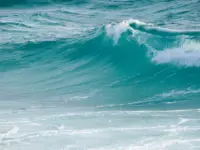Salmons refer to a family of fish that can usually be found in the waters off the North Atlantic and Pacific oceans. Â They are related to other fishes called trouts but these two types of fish differ in terms of their residency. Trouts are known to stay in one place in the ocean for their entire lives. Salmons meanwhile are famous for their journey to the shallow rivers where they are born to spawn or lay their eggs. Â In most cases though, after about a week from spawning, the mature salmons die. Â The most basic reason for this is that it only presents the natural life cycle of salmons. Â For a few years from birth, salmons will stay in the river and eventually venture out into saltwater for most of their adult lives. Â When they become pregnant are ready to lay their eggs, they automatically swim back to the river where they were born. Â As for experts, instinct basically propels the salmon to go back to the fresh water and select shallow areas for spawning.
Aside from the natural process in a salmon’s life cycle, dying after spawning is also said to be beneficial for the eggs and future offspring of salmons. Â Once they die, the freshwater where they returned will get fertilized by their disintegrating bodies. Â This process is said to provide various nutrients for baby salmons that are just starting out their lives in the river. Â With this explanation, the dying of salmons after they spawn doesn’t become a useless occurrence but rather becomes very useful for their species. Â After they die about a week from spawning, the salmon life cycle will then begin again with the hatching of the eggs. Â The newborn salmons will then again try to live their early lives in the river and proceed with their adult life in saltwater several months or a few years after they are born.












Leave a Reply